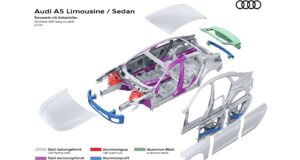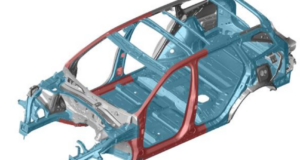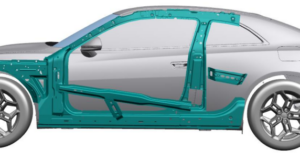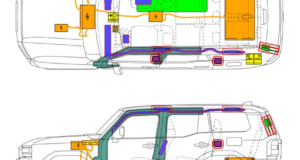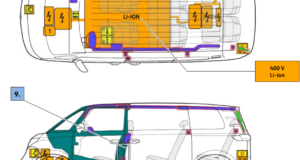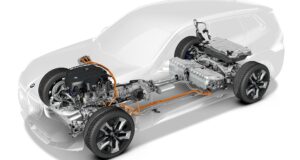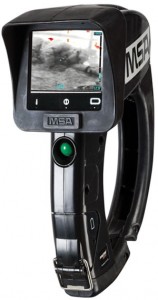 After one of the calls at 02:00, I just couldn’t fall back a sleep in the bunk. So I wondered over to the admin side of the station and picked up the latest Firehouse magazine. I started reading an article written by Ron Moore about the use of the TIC on an extrication/MVA scene. The TIC was used to help determine the number of occupants when there is an altered level of concousisness with the patients and a definite number of occupants cannot be accreiately obtained. The article shows the TIC used to determine if the surface temperature of the seat is higher than the ambient temperature. Many features could let to success and failure with this technique. For example, summer and winter temperatures could quickly heat or cool a seat surface if the occupant was only briefly in the vehicle before the crash and the material the seat surface is made from. In a future post, I will have the results of different tests done on the surface temperatures of a seat after different durations of an occupant sitting and different outside temperature.
After one of the calls at 02:00, I just couldn’t fall back a sleep in the bunk. So I wondered over to the admin side of the station and picked up the latest Firehouse magazine. I started reading an article written by Ron Moore about the use of the TIC on an extrication/MVA scene. The TIC was used to help determine the number of occupants when there is an altered level of concousisness with the patients and a definite number of occupants cannot be accreiately obtained. The article shows the TIC used to determine if the surface temperature of the seat is higher than the ambient temperature. Many features could let to success and failure with this technique. For example, summer and winter temperatures could quickly heat or cool a seat surface if the occupant was only briefly in the vehicle before the crash and the material the seat surface is made from. In a future post, I will have the results of different tests done on the surface temperatures of a seat after different durations of an occupant sitting and different outside temperature.
Moore’s article made me think back to a call on the highway where a truck rolled multiple times ejecting the driver and almost ejecting the passenger. The driver was scooped up and transported to a trauma center by a private ALS before my truck arrived. The passenger was out of it and couldn’t answer any questions. The one thing that made everyone on scene believes there was a 3rd occupant was there were 3 different sizes of shoes scattered across the highway. At 04:00 in the morning, it’s difficult to see anything off in the tall grass in the shoulder, even with a ton of lighting. I used the TIC to walk through the grass looking for anything that would stand out as warm. One thing did, decomposing logs! The logs looked awfully like a human body on the TIC. In the end, lucky for everyone there were only two occupants in the truck, both accounted for.
The bottom line is there could be use for a tool that is most likely already on the truck. Is this an outside of the box tactic? Yes and No. The tool is most likely on the truck; why not use it when the circumstances on scene are unknown? Just put this idea into the old mental toolbox.
 Boron Extrication An in-depth look into vehicle extrication and rescues involving today's automobiles
Boron Extrication An in-depth look into vehicle extrication and rescues involving today's automobiles
